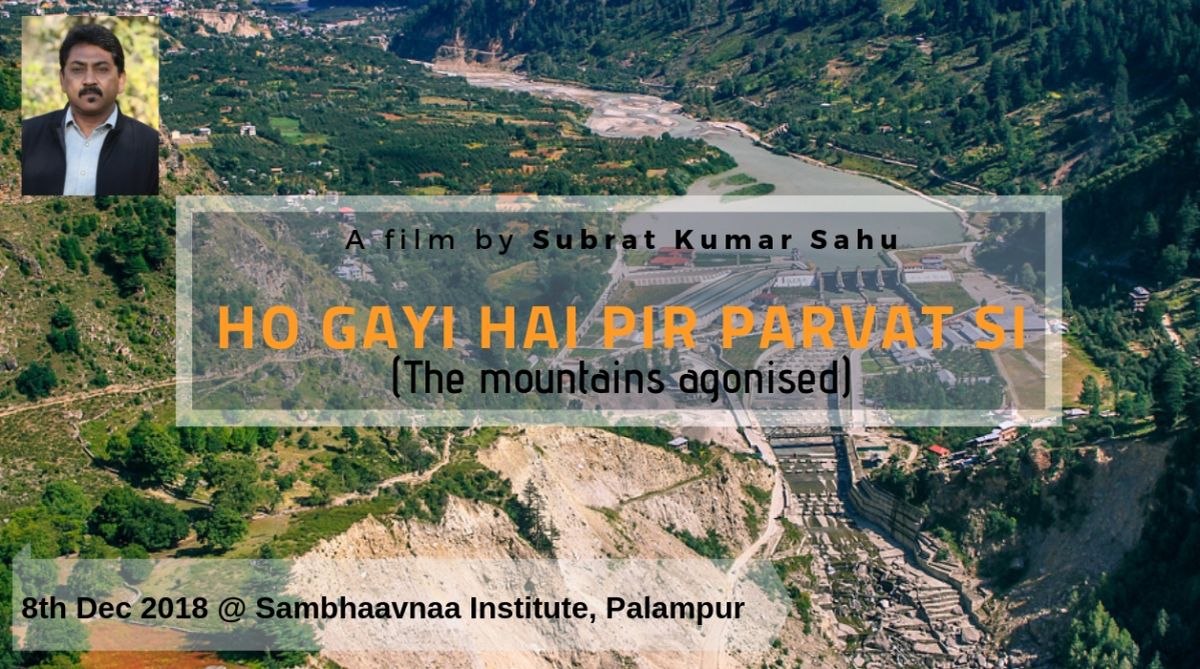‘The Mountains Agonised’, a documentary film by a Delhi based independent filmmaker, traces the pain of Sutlej (river) valley in Himachal Pradesh and the suffering of hill folks due to hydropower development over the years.
Screened at the ‘Cinema of Resistance’ festival in Palampur last week end, the documentary film by Subrat Kumar Sahu was shot over a period of 7 to 8 years’ travel from village to village along Sutlej Valley. The 110 minute long documentary film is titled ‘Ho Gayi Hai Peer Parvat Si’.
It captures visuals and resident testimonies of the damaging impact of ongoing hydropower projects on environment, local livelihoods and natural resources, including water sources. Besides, it depicts that how the execution of power projects has led to deforestation, health hazards, landslides and flash floods, leading to desperate situations for communities, wherein they are driven into dispossession and perpetual deprivation.
In the documentary film, the locals, from Hangrang Valley in Upper Kinnaur, not just narrate their experience of dams but also speak of their attempts to protect their lives, livelihoods, and cultures.
They tell endless tales of devastation as well as environmental violations and failure of the law and policy to address any of their concerns. Sahu originally hails from Odisha and has two-decade experience in television programming and filmmaking.
“I was travelling in the valley with my camera for another film back in 2010 and expected pristine landscapes. What I saw instead were mountains of muck and concrete and I knew that there was a story to be heard and told”.
Focusing on the Sutlej basin, his documentary film captures the devastation of people’s resources and the ecology in progress and the responses of the people to all this. Keeping the broad canvas of the ‘development debate’ in focus, the narrative is in the format of an informal travelogue: travelling through the state and learning the situation while also discovering the solutions people have to offer.
This interface is extensively intercepted by images describing the economic and cultural life that the mountain folks have been leading for centuries and how an ensuing colossal disaster is slowly taking in to its grip their social, cultural, and economic security systems. The Nature, of course, speaks for itself, and pits its own arguments.
Himachal Pradesh government’s agenda to tap hydro power from the state rivers and rivulets o generate income has led to much devastation of ecology and local livelihoods, mainly for lack of interest of the authorities to ensure environment safeguards.
The protests by the local communities and environmentalists have not stopped the government from moving ahead. Having identified 27000 Mega Watt(MW) power generation potential from the state rivers, the state has until now harnessed over 10,000 MW of electricity. “Out of five major river basins in Himachal Pradesh, the Sutlej basin has the highest identified capacity of 13,000 MW and has been the most ravaged,” said environment activist, Manshi Asher.











